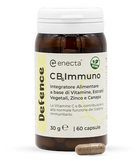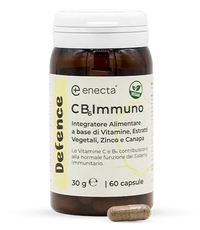In 1964, when he was working at the Weizmann Institute in Israel, Raphael Mechoulam was the first - in collaboration with his colleagues Yechiel Gaoni and Habib Edery – to isolate and analyse delta-9-tetrahydrocannabinol (commonly known as THC): one of the active principles best-known by the public.
The previous year,1963, the Israeli scientist discovered also cannabidiol (CBD). Mechoulam’s publications from those years and from the following years form the basis for scientific research on cannabis and for a thorough understanding of the differences and the similarities between these two fundamental active principles.
In cannabis over 80 cannabinoids can be found, the best-known are THC and CBD. Cannabinoids can be divided in two categories: natural cannabinoids and endogenous cannabinoids.
Natural cannabinoids, also known by the term phytocannabinoids, are a group of chemical compounds present in Cannabis Sativa. Besides the best-known, THC and CBD, also the therapeutic potential of CBG, cannabigerol, was demonstrated: another non-psychoactive cannabinoid present in varying amounts in the Cannabis plant.
The endogenous cannabinoids, on the other hand, also known as endocannabinoids, are organic compounds produced by the human body, belonging to the class of bioactive lipids, and are characterized by the capability to interact with the cannabinoid receptors.
The first endocannabinoid to be identified, in 1992, was anandamide (AEA), followed by 2- arachidonoylglycerol (2-AG). In the past few years at least three more endogenous cannabinoids were identified: 2-arachidonil-glyceril-ether (noladin, 2-AGE), a structural analogue of 2-AG, virodhamine and N-arachidonoyl dopamine (NADA).
The lipid mediators, together with the cannabinoid receptors and the related synthesis processes, transport and degradation, form the so-called endocannabinoid system.
THC (Delta-9-tetrahydrocannabinol)
THC was isolated and synthesized for the first time in the Sixties by the Israeli Raffael Mechoulam, who can be described as “the father of Cannabis” and was the first among scholars to address Cannabis and its potentials.
In 1985 the “Food and Drugs Administration” recognised its therapeutic capacity, developing a medical drug, Dronabinol, produced by Unimed Pharmaceuticals financed by the National Cancer Institute. THC is responsible for the psychotropic effect developing during consumption of Cannabis. THC generates the release of dopamine resulting in the effect of euphoria and wellbeing.
CBD (Cannabidiol)
CBD is an active compound of Cannabis sativa and represents the main phytocannabinoid present in the entire phytocomplex (hundreds of chemical substances and over 70 phytocannabinoids, of which some still little examined).
For some years now one can witness a renewed interest in CBD on the part of the scientific and medical communities, mainly due to the discovery of its antioxidant, anti-inflammatory, analgesic and neuroprotectant actions.
Ethan Russo is one of the main cannabis researchers in the world. Owing to him, for example, are the first research studies on the entourage effect of cannabinoids and terpenes.
His research studies focalised also on cannabidiol and the connection between the use of cannabis and modern pharmacological mechanisms, like the phytopharmaceutical treatment of migraine and chronic pain, or the interactions between phytocannabinoids and the serotoninergic and vanilloid receptors.
«Cannabidiol is a very effective drug for many pathologies – Russo explained during the Balkannabis Expo – it has very strong anti-inflammatory effects and hence reduces inflammations and pain, while it also protects the brain against problems like head traumas and strokes. Furthermore, there are various signals indicating that CBD could protect the brain from degenerative disorders like Alzheimer’s Disease and other pathologies causing dementia. CBD has also showed to be very effective in curing severe convulsions».
THC and CBD, which are the affinities?
THC and CBD are utilised, with different purposes, in the therapeutic field. Both give benefits to human health: THC is antispasmodic, analgesic, anticonvulsive, anti-inflammatory, is capable of stimulating appetite and has antiemetic properties. CBD has anti-inflammatory, anticonvulsive, antipsychotic, antioxidant, neuroprotectant and immune-modulatory effects.
THC and CBD, which are the differences?
THC has psychotropic characteristics contrary to CBD which, on the other hand, is capable to contrast the action of THC. An additional difference between THC and CBD lies in the capability of the first one to bind to the CB1 receptor, present in the central nervous system, unlike cannabidiol, which interacts with the CB2 receptor, present in various areas of the human body and in particular in the immune system.
THC, CBD and entourage effect
The combination between terpenes and cannabinoids is called entourage effect; some studies have demonstrated how such a combination can modify in a significant manner the action of the main active principles, THC and CBD.
Terpenes are hydrocarbon compounds present in natural resins and in essential oils, abundantly used in multiple fields. Some very common terpenes are, for example, geraniol, menthol, myrcene and camphor.
The secondary compounds of cannabis binding to the CB1 and CB2 receptors, can, for example, increase the therapeutic effects of THC, reducing the anxiety induced by its psychotropic principle.
Terpenes, on the other hand, when consumed, interact with the endocannabinoid system while acting in combination with the cannabinoids. For example, myrcene gives a product an odour similar to cloves, and has the capability of increasing the cell permeability and consequently to generate a rapid absorption of cannabinoids.
In conclusion
CBD and THC present various analogies related to the fields of application. However, in the case the use is expressly therapeutic, the right thing to do is to ask one’s physician to assess which of the two substances is the most compatible with the requirements of the individual.
Their main point of confluence is, indeed, their proven utility in the medical field. The huge difference, on the other hand, resides in the psychotropic potential: completely absent in cannabidiol, while present in various gradations in products containing THC.
































